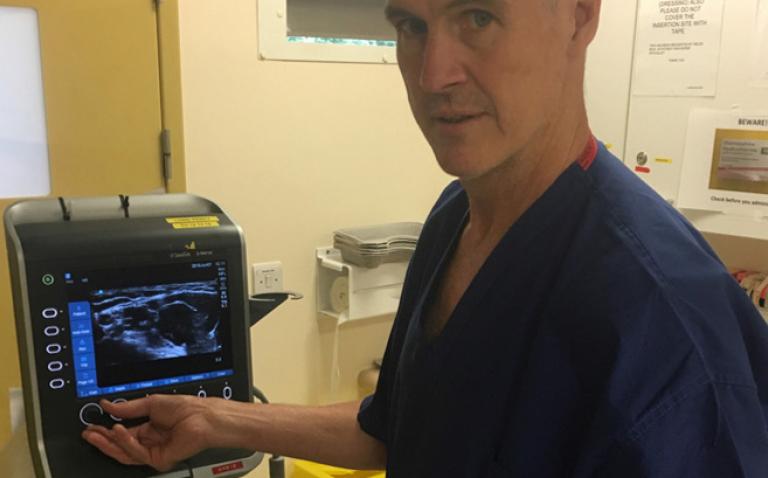Point-of-care ultrasound is at the heart of Frimley Park Hospital’s anaesthesia department, guiding procedures such as vascular access and nerve blocks.
Dr Tim Pepall, a consultant anaesthetist at Frimley Park, explained: “It’s essential to use ultrasound for central vascular access because of NICE guidelines, but we also use it occasionally for difficult peripheral vascular access and arterial lines. Ultrasound has transformed regional anaesthetic practice and we were relatively early adopters of it – it made sense to see the nerves, rather than going in blind. There is so much variation in nerve and vascular anatomy that you realise your previous techniques were really feeling in the dark. Nowadays, I would be very reluctant to do a plexus block without an ultrasound machine.”
Tim continued: “We’ve been using FUJIFILM SonoSite point-of-care systems for the last 10 years. There are five SonoSite instruments in the anaesthetic department and we’ve stayed with the one manufacturer because we’ve been very happy with it – we like the back-up service, as well as the simplicity of the systems and the quality of images it provides.
“The SonoSite S-Nerve interface is very intuitive, and it is great for portability, we can transfer it onto the wards and take it wherever we need to use ultrasound. With the new SonoSite XPorte, we’re also doing more echocardiography than before – which saves us having to discuss preoperative cases with the cardiologists as often – and we can see dynamic changes as they occur, and responses to our interventions.”










